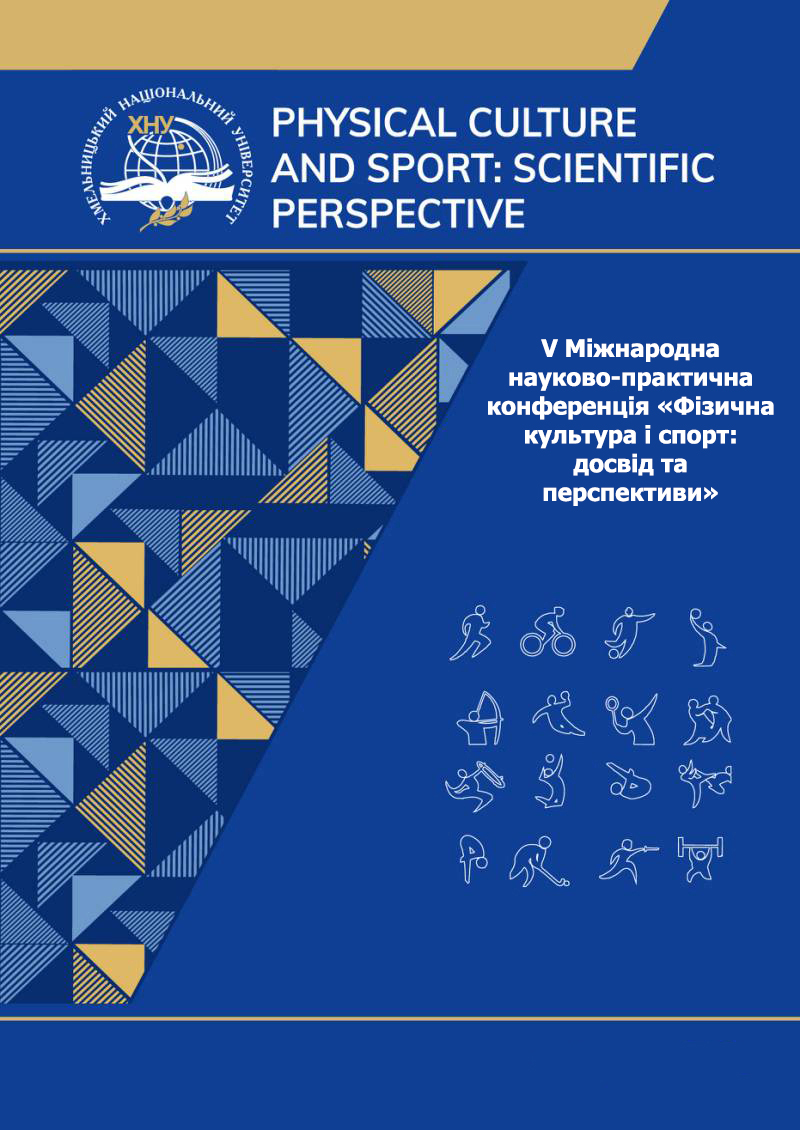ANALYSIS OF PHYSICAL CONDITION INDICATORS OF WOMEN AGE 35-45
DOI:
https://doi.org/10.31891/pcs.2025.1(1).16Keywords:
physical condition, women aged 35–45 years, anthropometric, morphofunctional and functional indicatorsAbstract
The study involved 50 women aged 35–45 years (x̅=40.5; S=0.8 years) who participated in physical fitness and wellness activities. Data collection and processing followed the ethical principles outlined in the Helsinki Declaration of the World Medical Association for medical research involving human subjects. All participants were informed about the measurement procedures, provided written consent for data processing, and authorized the use of their anthropometric indicators for further scientific research. To ensure accuracy, participants refrained from intense physical activity for 24 hours before measurements and avoided medications or pharmacological substances that could affect functional indicators. Additionally, they abstained from food and liquids for 3–4 hours before measurements.
The study employed the physical condition assessment methodology proposed by O.A. Pyrohova, which includes a comprehensive analysis of morphological and functional indicators. This methodology enables the evaluation of functional capacities and overall work capacity, crucial for predicting the body's response to physical exercise and monitoring training effectiveness. Based on the collected data, the level of physical condition (LPC) was determined as an integrated indicator reflecting the body's functional capacities. LPC calculation was based on anthropometric (height, body mass), functional (heart rate, mean arterial pressure), and age-related indicators. The obtained values allowed classification into specific levels, facilitating precise physical load planning, objective fitness progress tracking, and overall health assessment of women aged 35–45 years.
The analysis of anthropometric indicators revealed variations in body length and mass among the participants. The average height was x̅=165.4 cm with a standard deviation of S=1.1 cm, indicating minimal fluctuations within the studied age group (v=3%). Meanwhile, the average body mass was x̅=63.2 kg with a standard deviation of S=1.8 kg, showing a broader coefficient of variation (v=13%) and a range from 47.4 kg to 94.5 kg. The Pyrohova methodology also assessed heart rate, a key indicator of regulatory mechanisms under physical exertion and recovery. The average heart rate among women aged 35–45 years was x̅=77.0 bpm with a standard deviation of S=1.4 bpm. The variability coefficient (v=12%) and a wide range (45–92 bpm) suggested significant individual differences influenced by fitness level, cardiovascular characteristics, and lifestyle factors.
The study also evaluated mean arterial pressure (MAP) to obtain objective information about hemodynamics, regulatory mechanisms, and adaptation capacities. Considering hormonal changes affecting vascular tone and blood pressure in this age group, assessing these indicators is crucial for early risk factor detection and lifestyle modifications. The average MAP was x̅=89.2 mmHg, indicating normal cardiovascular function and effective circulatory regulation. The standard deviation (S=1.12 mmHg) and variability coefficient (v=9%) suggested relatively low variation within the sample, indicating stable blood pressure regulation mechanisms in the studied group.
The study classified the physical condition levels of women aged 35–45 into five categories: low, below average, average, above average, and high. Results indicated that 40% had a low LPC, 32% were below average, 18% had an average LPC, and only 6% were above average. Notably, no participants exhibited a high LPC. The mean LPC value in the research group was x̅=0.4 arbitrary units, classified as below average, with a standard deviation of S=0.1 arbitrary units. The high variability coefficient (33%) highlighted significant individual differences among participants, emphasizing the need for personalized approaches to physical activity and lifestyle adjustments.
References
Belyak, Yu. I. (2012). Method of integral assessment of physical fitness of mature women. Physical education, sport and health culture in modern society, (4), 244–247.
Asaulyuk, I. O., & Kozlovska, S. O. (2023). Age-related features of physical development of mature women with different states of the musculoskeletal system. Physical culture, sports and health of the nation, (16), 14–22.
Prylyutska, T. A., & Tkachova, A. I. (2018). Modern trends in programming health-improving fitness classes for mature women. In: Prospects, problems and existing achievements in the development of physical culture and sports in Ukraine: collection of scientific papers of the 1st All-Ukrainian Internet Conference "Color of Science" (pp. 90–94). Planer.
Tkachova, A. I., & Sushchyk, V. F. (2018). Analysis of motor activity of women of the first period of mature age with different body types. In: H. V. Korobeinikov, V. O. Kashuba, & V. V. Gamaliy (Eds.), Actual problems of physical culture, sports, physical therapy and occupational therapy: biomechanical, psychophysiological and metrological aspects. Materials of the 1st All-Ukrainian electronic scientific and practical conference with international participation (p. 166). NUFKSU.
Titova, G. V. (2019). Improving the functional capabilities of women 1-2 of mature age using innovative means of strength fitness [Dissertation]. Black Sea National University named after Petro Mohyla.
Kashuba, V., Ivchatova, T., & Khabinets, T. (2007). Correction of posture of women of the first mature age taking into account the spatial organization of the body. Theory and methodology of physical education and sports, (1), 54–59.
Garmash, A. G. (2017). Study of the main anthropometric and functional indicators of women of the first mature age who are engaged in health-improving functional fitness at the first stage of the experiment. Scientific journal [National Pedagogical University named after M. P. Dragomanov]. Series 15: Scientific and pedagogical problems of physical culture (physical culture and sports), (6), 25–30.
Belyak, Yu., & Oprishko, N. (2006). Analysis of physical fitness of women of different ages. Physical culture, sports and health of the nation, (6), 142–145.
Rymar, O., & Zaletska, A. (2024). Bioimpedance analysis of body composition components in women aged 35–45. Physical education, sport and health culture in modern society, 4(68), 63–69.
Bassuk SS, Manson JE. Physical activity in women. In: Rippe JM, ed. Lifestyle Medicine. 2nd ed. Boca Raton, FL: CRC Press; 2013:313-329.
Goedecke, J. H, & Micklesfield, L. K. (2014). The effect of exercise on obesity, body fat distribution and risk for type 2 diabetes. Diabetes and Physical Activity, 60:82-93.
Harris CD, Watson KB, Carlson SA, Fulton JE, Dorn JM, Elam-Evans L. Adult participation in aerobic and muscle-strengthening physical activities—United States, 2011. MMWR Morb Mortal Wkly Rep. 2013;62:326-330.
Kulie, T, Slattengren, A, Redmer, J, Counts, H., Eglash, A, & Schrager, S. (2011). Obesity and women's health: an evidence-based review. The Journal of the American Board of Family Medicine, 24(1):75-85.
Moore SC, Patel AV, Matthews CE, et al. Leisure time physical activity of moderate to vigorous intensity and mortality: a large pooled cohort analysis. PLoS Med. 2012;9:e1001335.
Downloads
Published
How to Cite
Issue
Section
License
Copyright (c) 2025 Ольга РИМАР , Анастасія ЗАЛЕЦЬКА

This work is licensed under a Creative Commons Attribution 4.0 International License.





